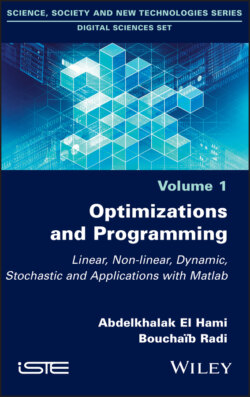Читать книгу Optimizations and Programming - Bouchaib Radi, Ghias Kharmanda, Michel Ledoux - Страница 35
1.9.1. Lagrangian relaxation
ОглавлениеLagrangian duality provides a particularly fruitful framework for relaxation. It works as follows:
– choose an inequality in the LP and remove it from the LP;
– add this inequality to the objective function with a multiplier that penalizes the objective function if the solution found does not satisfy the inequality.
This relaxation often produces a very good relaxation value, far better than continuous relaxation.
Consider the following LP:
[1.11]
To each constraint i ∈ I, we assign a real number λi ≥ 0 called the Lagrange multiplier. We also define the vector λ = (λi, 0 i ∈ I). The Lagrangian function is then defined as
This function has the two vector arguments x and λ and takes values in ℝ. Suppose that the PL is such that the problem minx∈S (x, λ) has an optimal solution for every λ ≥ 0.
More details are given in Chapter 7. Now consider the following LP [FLE 10]:
[1.12]
We obtain the optimal solution (0, 1.1, 4.4)T, which gives the optimal cost as z* = 6.6.
By relaxing the third constraint (x1 + x2 ≥ 4.4) and keeping the integrality constraints on the variables xi, we obtain the following LP by adding the expression λ(4.4 − x1 − x3) to the objective function, where λ is the Lagrangian relaxation coefficient, which is updated at each iteration of the method:
[1.13]
The last constraint is added to bound the variables xi. This guarantees that the problem is bounded for every λ > 0. The coefficient λ is updated as follows: λk+1 = max It can be shown that λ tends to 1 and z tends to 8.4.
